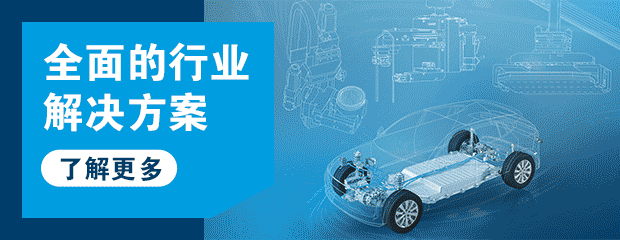力图降低网络设备功耗,能效以太网标准获得各大芯片厂商支持
主导IEEE 802.3az的官方研究机构Lawrence Berkeley国家实验室的研究人员Mike Bennett说:“我希望我们能够在九月份的会议上形成一项能够指导人们应用的草案。”
研究组也已经收到了一项所谓的可以应用于100Mbit和Gbit的低功耗空转提案,基于这项Intel主导的提案,以太网芯片可以在没有数据发送时将物理层设置为休眠模式。
一旦物理层处于休眠模式,工程师可以决定是否系统的其他部分也置于低功耗的状态,Bennett指出:“我认为挑战恰恰来自于人们如何根据物理层的状态关断系统的其他部分。”
尽管如此,也有一些工程师们认为这种低功耗空转的方法可能引入额外的缓冲和无法接受的网络抖动和响应时间,还有一种由Aquantia和Broadcom主导的提案称作物理层子集,可以将10Gbit的链接缩放至单独的Gbit通道,这样也可以节省功耗。
所有这些提案都需要对物理层和MAC层的构成作一些改变,这些改变会带来供应商的频繁的产品刷新,低功耗空转方案的提案人,Intel的网络工程师Robert Hayes指出:“虽然不会有大的硬件改动,但这些改动还是客观存在的。”
一位Broadcom的执行主管在最近的的采访中指出就网络设备来说物理层子集方案更优,同时他也补充说低功耗空转方案更适合于电脑服务器和客户端。
尽管如此,Hayes指出惠普网络组和思科系统的工程师们都表示了对低功耗空转方案的支持,同物理层子集方案不同的是,它允许工程师们有更大的自由度可以关断系统里的一部分功能。
“例如如果我们知道线上没有数据我们可以关断PCI Express总线,存储器控制器。甚至是部分主处理器” ,Hayes指出说:“这能够带来实实在在的功耗降低,一些开关供应商也同意这样的处理方法.”
.3az委员会会在5月或者7月的会议上对这两种方案的优劣进行讨论,目前看起来在下周的会议上不太可能有新的提案出现,这也是新的技术观点可以提案的最后一次会议。
研究组也会审阅一批针对10Mbit和背板以太网的提案。
研究组还可能提案一种降低10Mbit以太网传输信号振幅的方法,这些信号原先是针对3类电缆的设计,目前5类电缆可以处理这些低振幅传输信号,因此可以节省功耗。
研究组将分别评估低功耗空转方案和物理层子集方案在Gbit和10Gbit背板以太网链接上的应用,下周的会议上将对两种技术的折衷进行讨论,Bennett希望到九月末会议之前能够就所有目前遇到的显著问题形成结论。
.3az研究组作为802.1委员会的代表组织致力于更高层网络协议的讨论,.3az研究组的目标是建立起这样的机制,当一种应用或者操作系统需要在低功耗环境中运行时,这些物理层的节省功耗的技术对于上层协议不可见。
研究组开始试图通过在无网络传输要求时降低传输速率至10Mbit的方法降低功耗,不过后来测试表明速率由低到高的切换时间(长达20毫秒)可能会导致无法接受的丢包,特别是在音频数据交换中。
作为Lawrence Berkeley实验室更广泛研究行动的一部分,.3az研究组致力于在大范围的网络和消费电子系统中降低能耗。
一位Lawrence Berkeley的研究人员估计IEEE的研究努力在美国每年将会节约4亿5千万美元的能耗费用,有趣的是,这其中的大部分——2亿美元将来自家庭电脑,1.7亿美元来自于办公室,另外8千万美元来自于数据中心,研究人员还估计通过在低数据交换时降低数据率会降低能耗,其中在Gbit卡接口可以降低1.5瓦的功率,10 Gbit卡可以降低10瓦。
翻页查看英文原文:
Energy-efficient Ethernet standard gains traction
A standard to slash the power consumption on Ethernet networks is gaining traction and could be in a draft form suitable for designing products as early as September. The so-called energy-efficient Ethernet group has already settled on an approach for use on 100 Mbit and Gbit chips.
"I hope we can come out of our meeting in September with [a draft] people could implement," said Mike Bennett, a researcher at Lawrence Berkeley National Lab chairing the effort officially known as IEEE 802.3az.
The group has already accepted a so-called low-power idle proposal for use with 100 Mbit and Gbit connections. Under the proposal, led by Intel, Ethernet chips with no data to send would be able to put the PHY into a sleep mode.
Once the PHY is in sleep mode, engineers could decide whether they wanted to put other parts of their systems into a low power state. "I think a competitive edge could come from how people turn things off in a system based on what's happening at the PHY," said Bennett.
However, at 10 Gbit rates, some engineers have suggested the low-power idle approach could require additional buffers or might introduce jitter or latency that would be unacceptable. An alternate proposal from startup Aquantia and Broadcom, called subset PHY, calls for scaling a 10Gbit link down to a single Gbit channel to save power.
Both proposals will require some changes in the PHY and MAC components which vendors would probably make during regular product refresh cycles. "There are not huge hardware changes, but there are some," said Robert Hayes, an Intel networking engineer who helped define the low-power idle proposal.
A Broadcom executive said in a recent interview that the subset PHY approach is better suited to networking equipment. The low-power idle approach is geared more closely to the interests of computer servers and clients, he added.
However, Hayes said engineers from Hewlett-Packard's networking group as well as Cisco Systems have shown support for low-power idle. Unlike the subset PHY approach which maintains a Gbit connection, it allows engineers to turn off a range of functions in their systems, he said.
"If we know we don't have data coming down the wire we can turn off a PCI Express bus, memory controller and maybe even parts of a host processor," said Hayes. "That leads to substantial savings in a server and some switch vendors are saying the same thing," he added.
The .3az committee needs to debate the merits of the two approaches at meetings in May or July. It is unlikely any new proposals will come up at next week's meeting, the last meeting where new technology ideas can be proposed.
The group is also looking at proposals for 10 Mbit and backplane Ethernet.
The group is likely to propose lowering the transmit amplitude for 10 Mbit Ethernet signaling originally designed for the Category 3 cabling of its time. Today's Category 5 cables can handle lower transmit amplitudes, saving power.
Separately the group is looking at ways to apply low-power idle or subset PHY techniques to Gbit and 10 Gbit backplane Ethernet links. The trade offs for backplanes between the two techniques are expected to be debated at the meeting next week. Bennett said he was hopeful a decision on all the outstanding issues could be reached by the end of the September meeting.
The .3az group held discussions with representatives of the 802.1 committee on higher player protocols. The .3az goal is to create mechanisms that would let higher layer protocols override energy saving techniques in the PHY if an application or operating system needed to choose performance over low power.
The group initially explored the idea of ratcheting speeds down to as low as 10 Mbits/s when there was no network demand. However, tests indicated the switching time of as much as 20 milliseconds from low to high speed could cause unacceptable packet losses, especially for audio traffic.
The .3az work is in part a spin out of a broader initiative at Lawrence Berkeley Lab to lower energy consumption across a wide range of network and consumer systems.
One Lawrence Berkeley Labs researcher estimated the IEEE effort alone could save $450 million in energy costs a year just in the U.S. Interestingly, the brunt of the savings--$200 million--could come from home computers, with another $170 million from offices and $80 million from data centers. The researcher estimated that a Gigabit interface card could shave up to 1.5 W off its power consumption and a 10-Gbit card up to 10 W by scaling back data rates at times of low traffic.
声明:本网站所收集的部分公开资料来源于互联网,转载的目的在于传递更多信息及用于网络分享,并不代表本站赞同其观点和对其真实性负责,也不构成任何其他建议。本站部分作品是由网友自主投稿和发布、编辑整理上传,对此类作品本站仅提供交流平台,不为其版权负责。如果您发现网站上所用视频、图片、文字如涉及作品版权问题,请第一时间告知,我们将根据您提供的证明材料确认版权并按国家标准支付稿酬或立即删除内容,以保证您的权益!联系电话:010-58612588 或 Email:editor@mmsonline.com.cn。
- 暂无反馈

